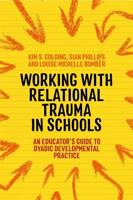Publisher's Synopsis
Bullying is a socially and culturally complex phenomenon that until now has largely been understood in the context of the individual. This book challenges the dominance of this approach, examining the processes of extreme exclusion that are enacted in bullying - whether at school, through face-to-face meetings or virtual encounters - in the context of group dynamics. Contributors draw upon qualitative empirical studies, mixed methods and statistics, to analyse the elements that allow bullying to emerge - the processes that produce exclusion and contempt, and the relations between children, teachers and parents. Introducing a new definition of bullying, this book goes on to discuss directions for future research and action, including more informed intervention strategies and re-thinking methods of prevention. Exploring bullying in the light of the latest research from a wide variety of disciplines, this book paves the way for a new paradigm through which to understand the field.











